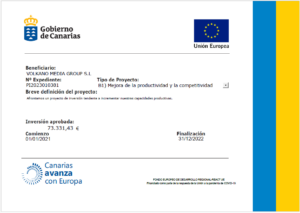In case the credit side of the account is heavier than the debit side, the account is said to have a credit balance. If the debit side of the account is heavier than the credit side, the account is said to have a debit balance. The debit side is assets definition and types • examples of fixed assets used to record debit entries and the credit side is used to record credit entries. This is because the journal contains a large number of transactions relating to purchases at different places according to their respective dates of occurrence.
Format of a Self-balancing Ledger Account
Both the accounting journal and ledger play essential roles in the accounting process. Bookkeepers primarily record transactions in a journal, also known as the original book of entry. It shows all of the activity for accounts receivable for the month of April, including debits and credits to the general ledger account and the net change to the account for the month. Summarize the ending balances from the general ledger and present account level totals to create your trial balance report. The trial balance totals are matched and used to compile financial statements. A ledger is a book or digital record that stores bookkeeping entries.
General Ledger with Budget Comparison Template
Thus, such a record helps you in tracking various transactions related to specific account heads. Further, it also helps in speeding up the process of preparing books of accounts. A General Ledger is a Ledger that contains all the ledger accounts other than sales and purchases accounts. Therefore, you need to prepare various sub-ledgers providing the requisite details to prepare a single ledger termed as General Ledger. Now, each of your transactions follows a procedure before they are represented in the final books of accounts.
Subsidiary Ledgers
The bank statement style lends itself to modern accounting, but for the time being, double entry will be explained by the older traditional method. The ledger is the principal book of accounts in which transactions of a similar nature relating to a particular person or thing are recorded in classified form. For instance, cash activity is usually recorded in the cash receipts journal. The account details can then be posted to the cash subsidiary ledger for management to analyze before it gets posted to the general ledger for reporting purposes. Accounting ledgers can be displayed in many different ways, but the concept is still the same. Ledgers summarize the balances of the accounts in the chart of accounts.
Cash Flow Statement
- This template is the perfect tool to help you verify the accuracy of your company’s account balances compared to bank figures and ensure the integrity of your general ledger.
- In the standard format of a ledger account, the balance is not stated after each transaction.
- For example, say you purchase raw material from your vendor William Paper Mill throughout the year.
- Further, it also helps in speeding up the process of preparing books of accounts.
A general ledger almost resembles a T-shaped account with entries on debit and credit sides. While debits show an increase in assets or expenses, credits indicate a decrease in assets (or, often, a boost in liabilities or revenue). Make it a habit to post journal entries to reflect all financial transactions regularly, including but not limited to revenue, expenses, and asset/liability adjustment.
The income statement follows its own formula, which works as follows. When a company receives payment from a client for the sale of a product, the cash received is tabulated in net sales along with the receipts from other sales and returns. The cost of sales is subtracted https://www.business-accounting.net/ from that sum to yield the gross profit for that reporting period. A private ledger is where accounts of confidential nature are recorded. Further, you also match General Ledger Account balances to the source documents to see if the accounts are accurate.
Current liabilities can include things like employee salaries and taxes, and future liabilities can include things like bank loans or lines of credit, and mortgages or leases. Since every transaction affects at least two accounts, fully recording its impact on the ledger requires us to make two entries for each transaction. Another important fact to note stems from the fact that total assets are equal to total liabilities and capital at any given time. For example, the amount of capital that Mr. John has on the first day of the accounting period (see the previous example) will be shown on the credit side of Mr. John’s capital account. For example, the amount payable to United Traders on the first day of the accounting period is recorded on the credit side of the United Traders Account. Any increase in liability is recorded on the credit side of the account, while any decrease is recorded on the debit side.
These transactions relate to an asset, a liability, an individual, or an expense. Let’s take an example to understand how you can transfer the journal entries to General Ledger. For balance sheet accounts, the opening balance is usually the closing balance from the previous period. Income statement accounts start with an opening balance of zero because revenues and expenses should have been closed to retained earnings at the end of the prior period. In accounting, double-entry bookkeeping refers to a system of accounting where every transaction requires a corresponding entry.
A sales ledger is a detailed list in chronological order of all sales made. This ledger is often also used to keep track of items that reduce the number of total sales, such as returns and outstanding amounts still owed. Thus, it can be very difficult to organize if you have a huge number of transactions in a given accounting period. General Ledger Codes are nothing but the numeric codes that you assign to different General Ledger Accounts.
There are several types of ledger book formats, with the main bookkeeping ledger being a general ledger (also referred to as a master sheet). This is used to generate financial statements for a business, such as a balance sheet or an income statement. The double-entry bookkeeping method ensures that the general ledger of a business is always in balance — the way you might maintain your personal checkbook. Every entry of a financial transaction within account ledgers debits one account and credits another in the equal amount. So, if $1,000 was credited from the Assets account ledger, it would need to be debited to a different account ledger to represent the transaction.




